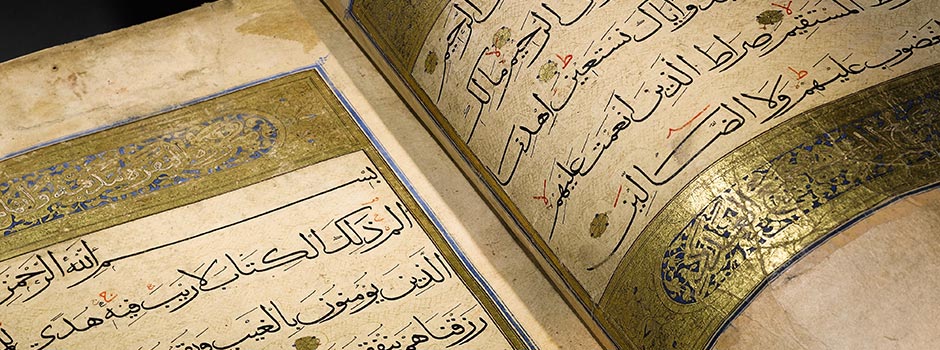
LONDON’S ANNUAL INDIAN AND ISLAMIC WEEK Arts of the Islamic World at Sotheby’s
Oct 03, 2015 Art Auction

As part of London’s annual Indian and Islamic Week, which runs from 2 to 7 October, Sotheby’s 'Arts of the Islamic World' auction will offer an exquisite array of almost 230 treasures. Bringing together manuscripts, paintings and works of art created under Islamic patronage over eleven centuries, the objects will be on show at Sotheby’s New Bond Street galleries from 2 to 6 October followed by the auction on 7 October 2015.
Highlights include a rediscovered monumental early 19th-century Persian portrait of King Jamshid, the original plans and drawings of the first Saudi extension to The Prophet’s Holy Mosque in Medina, two rare Ottoman tombak sections of armour and a monumental Mamluk Qur’an dating to fourteenth-century Egypt.
This magnificent and highly important portrait of the celebrated mythical Persian King is to be offered on the market for the first time – an exciting rediscovery from a set of royal paintings made for the Imarat-i-Sadri Palace in Isfahan, thought to have been lost until 1985. Of monumental size, this work is an archetypal example of the extensive canon of life-size portraits executed by the famed court painter, Mihr ‘Ali, whose works were commissioned by the ruling monarch Fath ‘Ali Shah. The beautifully executed portrait of this renowned character of Persian folklore and tradition encapsulates courtly splendour of the reign of the Qajar dynasty, during which Persian arts were given a platform to flourish.
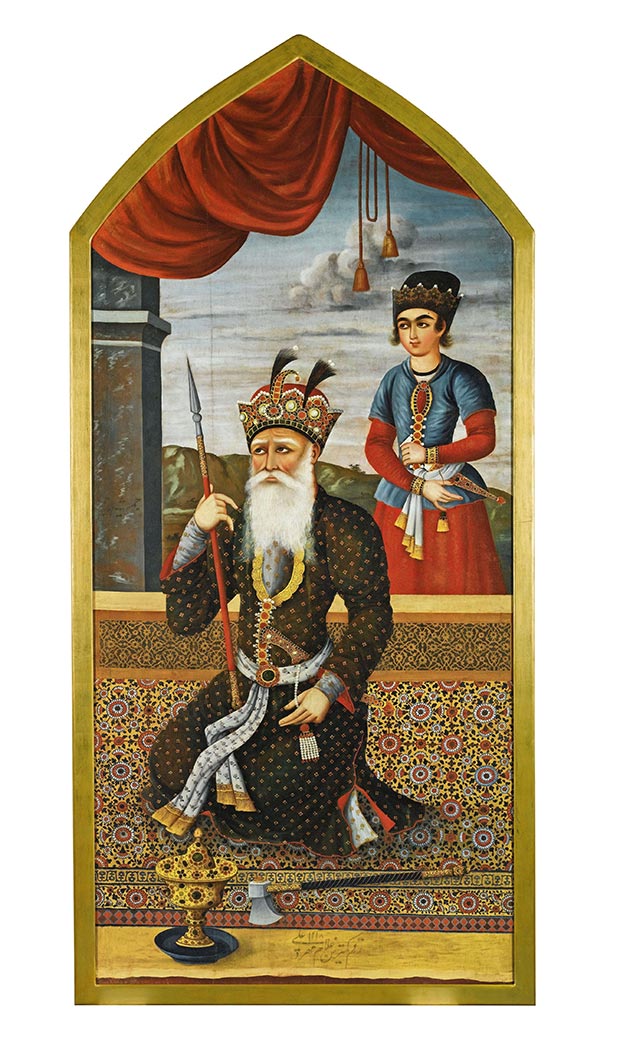 A Qajar Portait of King Jamshid / Courtesy of Sotheby’s
A Qajar Portait of King Jamshid / Courtesy of Sotheby’s
An important and unique architectural archive of drawings and photographs of the Prophet’s Mosque in Medina, will be offered for the first time. These designs, dating from 1951-55, built on the very origins of Islamic architecture, namely the construction of the first mosque on the site in Medina by The Prophet Muhammad in 622 AD, and were the first major Saudi development to the Prophet’s Mosque. Fahmy Moemen Bey, the chief architect for the project, was selected by King Abdul-Aziz. Today, his designs are part of the urban fabric of cities in Saudi Arabia, Syria and in his birthplace of Cairo.
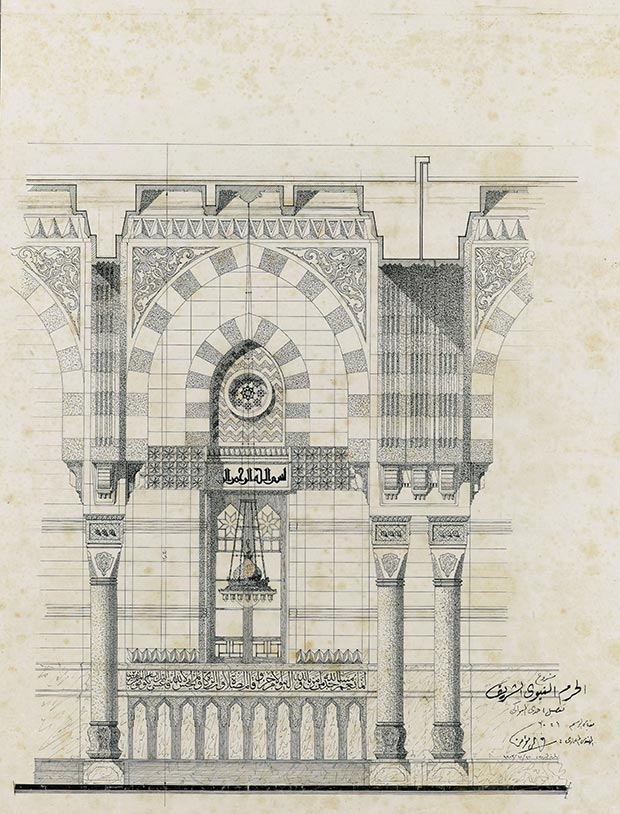 Original Plans for the Prophet’s Holy Mosque in Medina / Courtesy of Sotheby’s
Original Plans for the Prophet’s Holy Mosque in Medina / Courtesy of Sotheby’s
The Jami al-Tawarikh or 'History of the World' was originally compiled by Rashid al-Din in 1310 AD and was divided into four sections – the first of which provides a description of the Mongol and Turkish tribes focusing on Genghis Khan and his ancestors and successors (known as the ‘Cingiznameh’). This leaf from Emperor Akbar’s imperial Mughal manuscript of circa 1596, demonstrates the important court artist Basawan's aptitude for portraiture, his rendering of all the faces are sensitively observed showing his awareness and understanding of European art. Basawan was a master at creating spatial depth and movement and his compositions were both dramatic and perfectly balanced. In this lot, a dramatic battle scene is unfolding, a mass of bodies tumbling diagonally across the picture plane.
The painting is in superb condition, and comes from the collection of Joel Spitz (d.1963), Glencoe, Illinois, and has not been seen on the market since the 1940s.
.jpg) A leaf from Emperor Akbar's royal copy of the Jami al-Tawarikh of Rashid al-Din Fazlullah Hamadani (d.1318 AD): Burghul Nuyan killed on the battlefield, attributed to Basawan and Bhim Gujarati, India, Mughal, circa 1596 / Courtesy of Sotheby’s
A leaf from Emperor Akbar's royal copy of the Jami al-Tawarikh of Rashid al-Din Fazlullah Hamadani (d.1318 AD): Burghul Nuyan killed on the battlefield, attributed to Basawan and Bhim Gujarati, India, Mughal, circa 1596 / Courtesy of Sotheby’s
With truly monumental dimensions (45 by 33cm), this impressive, complete manuscript of the Qur'an is a great rarity, whose patron must have been of considerable status and wealth. The production of very large Qur'an manuscripts was popular among successive Mamluk Sultans and viziers in the fourteenth and early fifteenth century. This manuscript on paper has 392 leaves plus 7 flyleaves. It has nine lines to the page, written in muhaqqaq script in black ink. Verses are separated by gold florets pointed in blue and red, while surah headings are written in simple gold thuluth.
 A Mamluk Qur’an dating to 14th-century Egypt / Courtesy of Sotheby’s
A Mamluk Qur’an dating to 14th-century Egypt / Courtesy of Sotheby’s
Two lots from the collection of Theron J. Damon (d.1973), who specialised in matters of the Near East and travelled extensively in Turkey, formed part of the first exhibition dedicated to Turkish history, held at the Fogg Art Museum, Harvard University, Cambridge, in 1954. The highlight of these works is an Ottoman talismanic shirt from 1583. Intended for an official of high rank, this striking talismanic shirt is of the highest quality, its original bold colours and bright gold highlight its strong geometric design centred on quotations from the Qur’an, prayers and invocations, offering the promise of protection to its wearer.
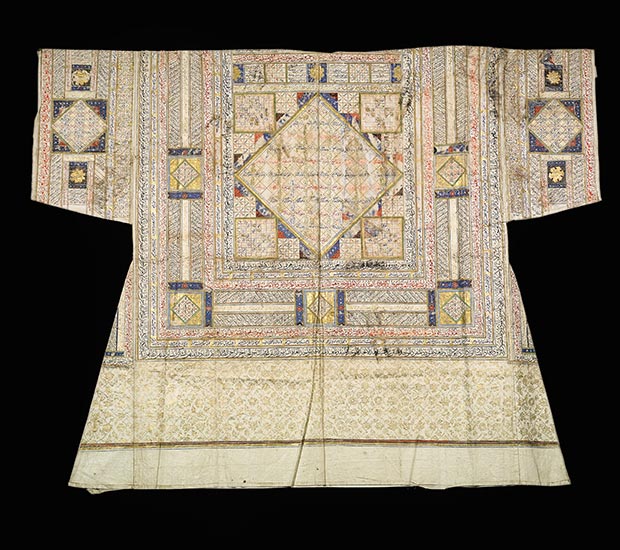 An Ottoman talismanic shirt (tilsimli gomlek), Turkey, dated 991 AH/1583 AD / Courtesy of Sotheby’s
An Ottoman talismanic shirt (tilsimli gomlek), Turkey, dated 991 AH/1583 AD / Courtesy of Sotheby’s
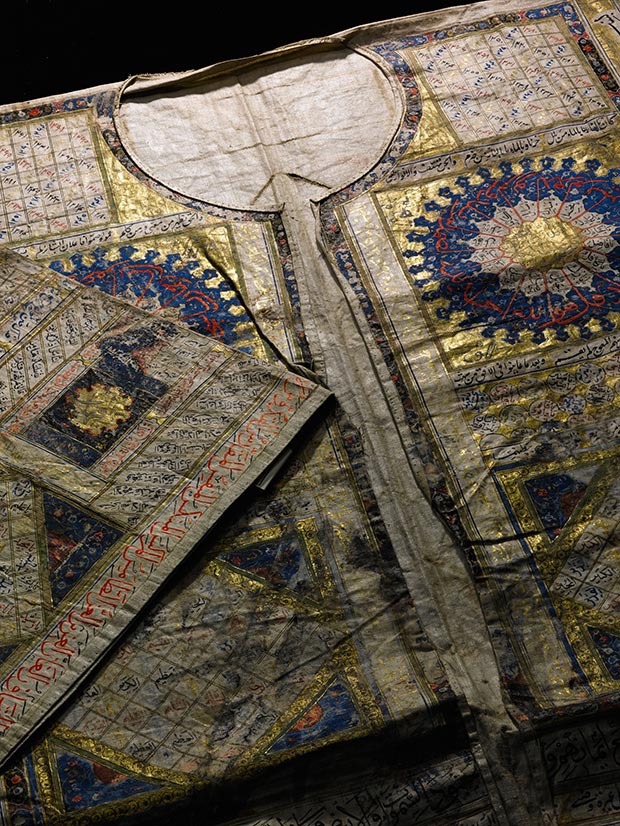 An Ottoman talismanic shirt (tilsimli gomlek), Turkey, dated 991 AH/1583 AD / Courtesy of Sotheby’s
An Ottoman talismanic shirt (tilsimli gomlek), Turkey, dated 991 AH/1583 AD / Courtesy of Sotheby’s
This exceptionally rare tombak breast-plate is testament to the grandeur, wealth and glory of the Ottoman imperial army - whose visual splendour would have equalled if not surpassed its physical might. Composed primarily of copper alloy, a metal too soft to have been of serious use in battle, this piece most likely belonged to a member of the ceremonial janissary guard of the vizier or even the Sultan himself.
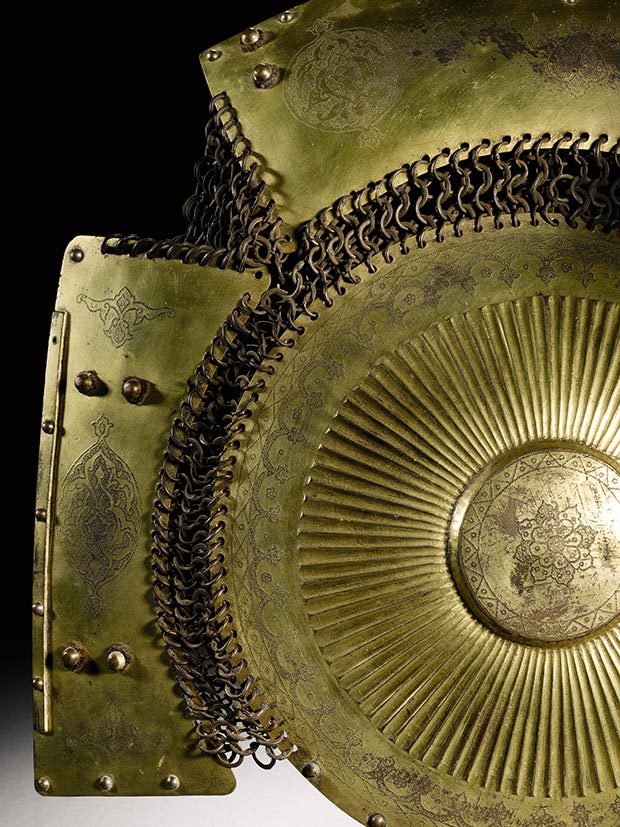 A rare Ottoman ‘Tombak’ Breast Plate, Turkey, 16th/17th century / Courtesy of Sotheby’s
A rare Ottoman ‘Tombak’ Breast Plate, Turkey, 16th/17th century / Courtesy of Sotheby’s
A rare Iznik pottery dish, leads a selection of extraordinary Iznik pottery – one of the wonders of enabled by the courtly patronage emanating from Istanbul during the reign of Suleyman the Magnificent. Traditionally referred to as ‘Damascus Style’, this dish belongs to a small group of similar ceramics featuring a palette of sage or olive green, cobalt blue, and pastel pink colours with black outlines with a dominant floral design – the rarest and finest made group of Iznik design.
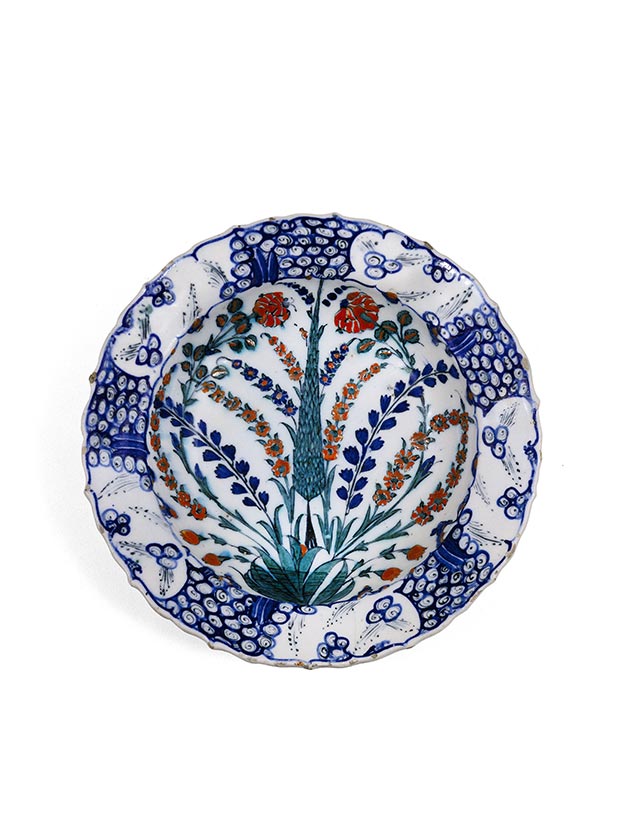 A rare Iznik 'Damascus' style pottery dish, Turkey, circa 1540 / Courtesy of Sotheby’s
A rare Iznik 'Damascus' style pottery dish, Turkey, circa 1540 / Courtesy of Sotheby’s
A rare large and elegant Safavid brass astrolabe, signed by the celebrated craftsman Muhammad Khalil Ibn Hasan 'Ali, and decorated by Muhammad Mahdi al-Yazdi from Isfahan, Persia, in the 17th-century.
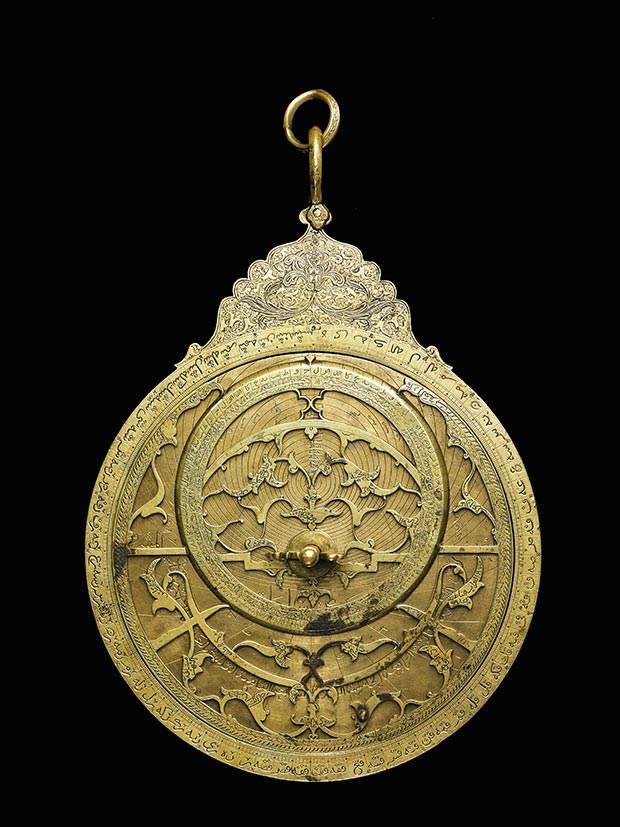 A Safavid brass astrolabe, dated 1085 AH/1674-75 AD / Courtesy of Sotheby’s
A Safavid brass astrolabe, dated 1085 AH/1674-75 AD / Courtesy of Sotheby’s
This unique box is characterised by its octagonal form, luxurious use of materials, notably tortoiseshell, mother-of-pearl and ivory. Its design derives from the classic crescent moon and star with a cintamani motif on the lid, both iconic Ottoman themes.
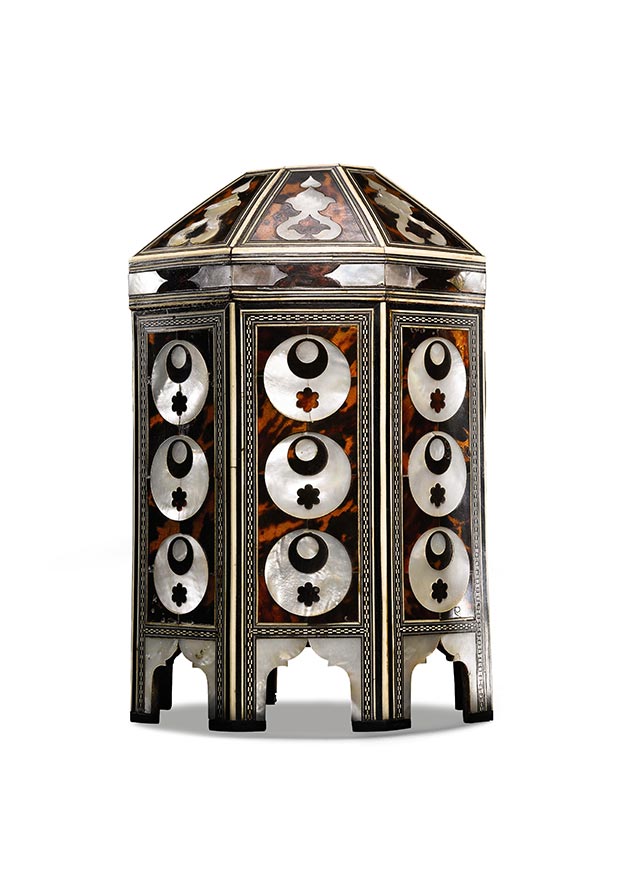 Ottoman Tortoiseshell and Pearl Box, circa 1640 / Courtesy of Sotheby’s
Ottoman Tortoiseshell and Pearl Box, circa 1640 / Courtesy of Sotheby’s
The full sale catalogue can be viewed online here.
Comments
Add a comment